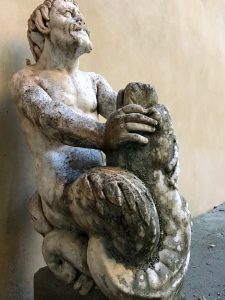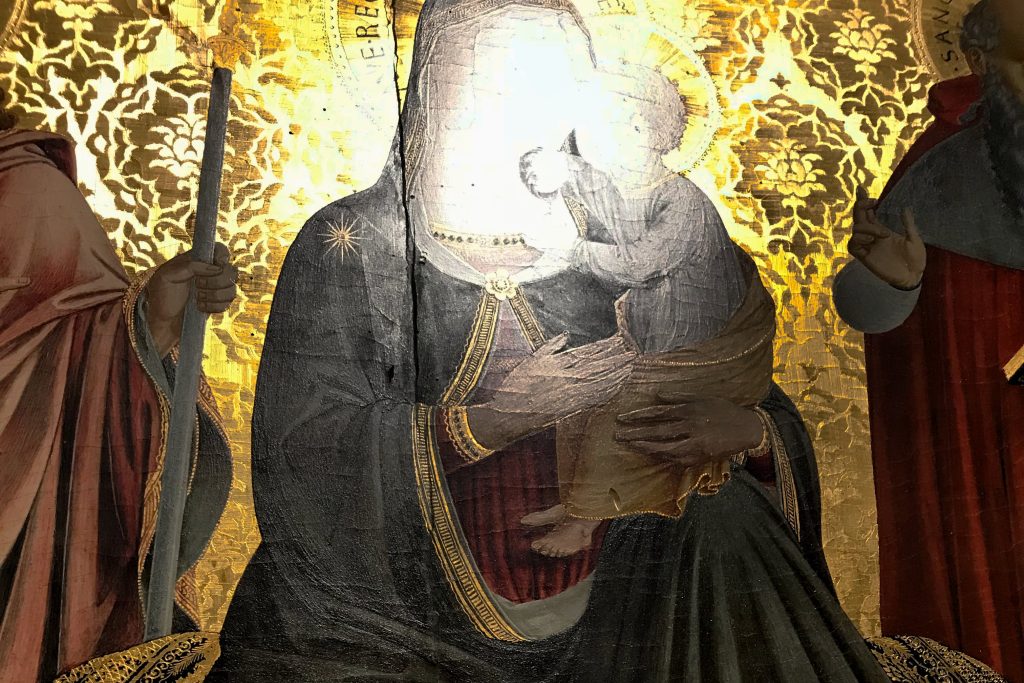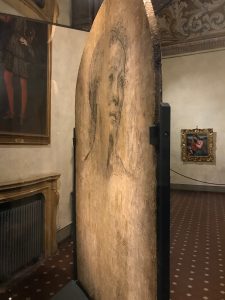Howard Zinn looked at the world from alternate angles. He discovered early in his life little discrepancies in the stories we’re told, the history we’re taught, the everyday beliefs passed down to us by parents, teachers, and those given prestige. Most people don’t even notice the cracks. Others ignore the contradictions. In either case, few people give a second thought to the myriad assumptions, orthodoxies, predisposed customs, and unexamined beliefs thrust upon us from childhood through our adult lives. Once the questions start, there’s no end; there’s no more being blind, deaf and dumb. Zinn spent his life exposing the fault lines. Few ever do this, fewer get the chance to do it on the scale he did. Some give up, others just grumble. The more insistent get shut-off, silenced, censored, sometimes imprisoned. It’s unfortunate that those who call out the incongruities are often ridiculed, or persecuted, or prosecuted. Fortunately for us, a few plow through the roadblocks. After all, the liberal media has to at least pretend to be liberal—an occasional leak in the system lets it look less rigged.
From his book, On History, I’d like to reprint every chapter. It’s one eyeopener after another. But I‘ll leave something for you to explore on your own. The following is chapter 15 in its entirety. It’s specifically speaking about higher education, but it is as easily applicable to primary and secondary education. I’d say more crucial for early education, because it’s where the indoctrination begins and takes a stranglehold. And it’s also applicable to the media—journalism, TV, radio, internet, publishing—which on the surface appear diverse, but on closer inspection the major players betray their strong biases if you look at the bulk of media production and their predilections. Here is his treatise on the importance of a free marketplace of ideas.
How Free is Higher Education?
Education has always inspired fear among those who want to keep the existing distributions of power and wealth as they are.
In my thirty years of teaching—in a small southern college, in a large northeastern university—I have often observed that fear. And I think I understand what it is based on. The educational environment is unique in our society: it is the only situation where an adult, looked up to as a mentor, is alone with a group of young people for a protracted and officially sanctioned period of time and can assign whatever reading he or she chooses, and discuss with these young people any subject under the sun. The subject may be defined by the curriculum, by the catalog course description, but this is a minor impediment to a bold and imaginative teacher, especially in the literature, philosophy and the social sciences where there are unlimited possibilities for free discussion of social and political issues.
That would seem to be an educational ideal, an arena for free discussion, assuming a diversity of viewpoints from a variety of teachers, of the most important issues of our time. Yet it is precisely that situation, in the classrooms of higher education, which frightens the guardians of the status quo.
They declare their admiration for such freedom in principle, and suggest that radicals are insufficiently grateful for its existence. But when teachers actually use this freedom, introducing new subjects, new readings, outrageous ideas, challenging authority, criticizing “Western civilization,” amending the “canon” of great books as listed by certain educational authorities of the past, then the self-appointed guardians of “high culture” become enraged.
Early in my teaching career I decided that I would make the most of the special freedom that is possible in a classroom. I would introduce what I felt to be the most important, and therefore the most controversial, questions in my class.
When I was assigned, as a young professor at Spelman College, a college for black women in Atlanta, a course in “Constitutional Law,” I changed the course title to “Civil Liberties” and departed from the canonized recital of Supreme Court cases. I did not ignore the most important of these cases, but I also talked with the students about the social movements for justice and asked what role these movements played in changing the environment within which Supreme Court decisions were made.
When I taught American history, I ignored the canon of the traditional textbook, in which the heroic figures were mostly presidents, generals and industrialists. In those texts, wars were treated as problems in military strategy and not in morality; Christopher Columbus and Andrew Jackson and Theodore Roosevelt were treated as heroes in the march of democracy, with not a word from the objects of their violence.
I suggested that we approach Columbus and Jackson from the perspective of their victims, that we look at the magnificent feat of the transcontinental railroad from the viewpoint of the Irish and Chinese laborers who, in building it, died by the thousands.
Was I committing that terrible sin which is arousing the anger of today’s fundamentalists: “politicizing the curriculum”? Is there any rendition of constitutional law, any recounting of American history that can escape being political—that is, expressing a political point of view? To treat Theodore Roosevelt as a hero (which is usually not done overtly, but in an expression of quiet admiration)—is that less “political’ than pointing to his role as an early imperialist, a forerunner of a long string of crude U.S. interventions in the Caribbean?
I have no doubt that I was taking a political stand when, in the early 1960s, I expressed respect for my students who missed classes to demonstrate in downtown Atlanta against racial segregation. In doing that, was I being more political than the fundamentalist Allan Bloom, at Cornell, who pointed with pride to the fact that the students in his seminar on Plato and Aristotle stuck to their studies and refused to participate in the social conflict outside the seminar room?
In my teaching I never concealed my political views: my detestation of war and militarism, my anger at racial inequality, my belief in a democratic socialism, in a rational and just distribution of world’s wealth. To pretend to an “objectivity” that was neither possible nordesirable seemed to me dishonest.
I made it clear to my students at the start of each course that they would be getting my point of view on the subjects under discussion, that I would try to be fair to other points of view, that I would scrupulously uphold their right to disagree with me.
My students had a long experience of political indoctrination before they arrived in my class—in the family, in high school, in movies and television. They would hear viewpoints other than mine in other courses, and for the rest of their lives. I insisted on my right to enter my opinions in the marketplace of ideas, so long dominated by orthodoxy.
Surely the expression of “political views” (what is just, or unjust? what can citizens do?) is inevitable in education. It may be done overtly, honestly, or it may be there subtly. But it is always there, however the textbook, by its very bulk and dullness, pretends to neutrality, however noncommittal is the teacher.
It is inevitably there because all education involves selection—of events, of voices, of books—and any insistence on one list of great books or great figures or great events is a partial (in both senses of that term) rendering of our cultural heritage.
Therefore it seems to me that the existence of free expression in higher education must mean the opportunity for many points of view, many political biases, to be presented to students. This requires a true pluralism of readings, ideas, viewpoints—a genuinely free marketplace of thought and culture. Let both Shakespeare and Wole Soyinka, Bach and Leonard Bernstein, Dickens and W.E.B. DuBois, John Stuart Mill and Zora Neale Hurston, Rembrandt and Picasso, Plato and Lao-tzu, Locke and Marx, Aeschylus and August Wilson, Jane Austen and Gabriel Garcia Màrquez be available to students.
Such a free marketplace of ideas does not depend essentially on “the curriculum.” How many words have been wasted moving those empty shells around the debating table! What is crucial is the content of those shells, which depends on who the teachers are and who the students are. A thoughtful teacher can take a course labeled “Western Civilization” and enlarge its content with an exciting global perspective. Another teacher can be given a course grandly called “World Civilization” and give the student an eclectic, limp recounting of dull events and meaningless dates.
The pluralism in thought that is required for truly free expression in higher education has never been realized. Its crucial elements—an ideologically diverse faculty, a heterogeneous student body (in class, race, sex—words that bring moans from the keepers of the “higher culture”)—have always been under attack from outside and from inside the colleges and universities.
McCarthyism, in which the corporate nature of academic institutions revealed itself in the surrender of university administrators to government inquisitors (see Ellen Schrechers’ book No Ivory Tower: McCarthyism in the Universities for the details), was only the most flagrant of the attacks on freedom of expression. More subtle, more persistent, has been the control of faculty appointments, contract renewals and tenure (inevitable with political considerations) by colleagues, but especially by administrators, who are the universities’ links with the dominant forces of American society—the government, the corporations, the military.
Boston University, where I taught for many years, is not too far from typical, with its panoply of military and government connections—ROTC chapters for every military service, former government officials given special faculty posts, the board of trustees dominated by corporate executives, a president eager to curry favor with powerful politicos. Almost all colleges and universities are organized as administrative hierarchies in which a president and trustees, usually well connected to wealthy and important people in the outside world, make the critical decisions as to who may enjoy the freedom of the classroom to speak to the young people of the new generation.
Higher education, while enjoying some special privileges, is still part of the American system, which is an ingenious, sophisticated system of control. It is not totalitarian; what permits it to be called a democracy is that it allows apertures of liberty on the supposition that this will not endanger the basic contours of wealth and power in the society. It trusts that the very flexibility of a partially free system will assure its survival, even contribute to its strength.
Our government is so confident of its power that it can risk allowing some political choice to the people, who can vote for Democrats or Republicans but find huge obstacles of money and bureaucracy if they want an alternative. Our corporations are so wealthy that they can afford some distribution of wealth to a supportive middle class, but not to the 30 or 40 million people who live in the cellars of society.
The system can allow special space for free expression in its cultural institutions, the theater, the arts, the media. But the size of that space is controlled by money and power; the profit motive limits what is put on stage or screen; government officials dominate the informational role of the news media.
Yes, there is, indeed, a special freedom of expression in the academy. How can I at Boston University, or Noam Chomsky at MIT, or David Montgomery at Yale, deny that we have had more freedom in the university than we would have in business or other professions? But those who tolerate us know that our numbers are few, that our students, however excited by new ideas, go out into a world of economic pressures and exhortations to caution. And they know too that they can point to us as an example of the academy’s openness to all ideas.
True, there is a tradition of academic freedom, but it is based on a peculiar unspoken contract. The student, in return for the economic security of a career and several years with some degree of free intellectual play, is expected upon graduation to become an obedient citizen, participating happily in the nation’s limited pluralism (be a Republican or a Democrat, but please, nothing else).
The boundaries for free expression in the university, though broader than in the larger society, are still watched carefully. When that freedom is used, even by a small minority, to support social change considered dangerous by the guardians of the status quo, the alarm goes out: “The Communists are infiltrating our institutions”; “Marxists have taken over the curriculum”; “feminists and black militants are destroying classical education.”
Their reaction approaches hysteria: “With a few notable exceptions, our most prestigious liberal arts colleges and universities have installed the entire radical menu at the center of their humanities curriculum,” says Roger Kimball in his book Tenured Radicals. The shrillness of such alarms is never proportionate to the size of the radical threat. But the Establishment takes no chances. Thus J. Edgar Hoover and Joseph McCarthy saw imminent danger of communist control of the U.S. government; protectors of “the canon” see “tenured radicals” taking over higher education. The axes then get sharpened.
Yes, some of us radicals have somehow managed to get tenure. But far from dominating higher education, we remain a carefully watched minority. Some of us may continue to speak and write and teach as we like, but we have seen the axe fall countless times on colleagues less lucky. And who can deny the chilling effect this has had on other faculty, with or without tenure, who have censored themselves rather than risk a loss of promotion, a lower salary, a non-renewal of contract, a denial of tenure?
Perhaps, after all, Boston University cannot be considered typical, having had for 20 years probably the most authoritarian, the most politically watchful university president in the country. But although it is hard to match John Silber as an educational tyrant, he can be considered (I base this on spending some time at other universities) not a departure from the norm, but an exaggeration of it.
Have we had freedom of expression at Boston University?
A handful of radical teachers, in a faculty of over a thousand, was enough to have John Silber go into fits over our presence on campus, just as certain observers of higher education are now getting apoplectic over what they see as radical dominance nationwide. These are ludicrous fantasies, but they lead to attacks on the freedom of expression of those faculty who manage to overcome that prudent self-control so prominent among academics. At Boston it must have been such fantasies that led Silber to determinedly destroy the faculty union, which was a minor threat to his control over faculty. He handled appointments and tenure with the very political criteria that his conservative educational companions so loudly decry. In at least seven cases that I know of, where the candidates were politically undesirable by Silber’s standards, he ignored overwhelming faculty recommendations and refused them tenure.
Did I have freedom of expression in my classroom? I did, because I followed Aldous Huxley’s advice: “Liberties are not given; they are taken.” But it was obviously infuriating to John Silber that every semester 400 students signed up to take my courses, whether it was “Law and Justice in America” or “An Introduction to Political Theory.” And so he did what is often done in the academy; he engaged in petty harassments—withholding salary raises, denying teaching assistants. He also threatened to fire me (and four other members of the union) when we held our classes on the street rather than cross the picket lines of striking secretaries.
The fundamentalists of politics—the Reagans and Bushes and Helmes—want to pull the strings of control tighter on the distribution of wealth and power and civil liberties. The fundamentalists of law, the Borks and Rehnquists, want to interpret the Constitution so as to put strict limits on the legal possibilities for social reform. The fundamentalists of education fear the possibilities inherent in the unique freedom of discussion that we find in higher education.
And so, under the guise of defending “the common culture” or disinterested scholarship” or “Western civilization,” they attack that freedom. They fear exactly what some of us hope for, that if students are given wider political choices in the classroom than they get in the polling booth or the workplace, they may become social rebels. They may join movements for racial or sexual equality, or against war, or, even more dangerous, work for what James Madison feared as he argued for a conservative Constitution: “an equal division of property.” Let us hope so.
 On rereading this chapter as I typed it out—since copy and paste isn’t an option with most e-book readers—I’m once again impressed by the thoroughness and conciseness of his argument. His direct, clear presentation hits so many targets in such a short space that one reading isn’t enough to keep in mind all of his points, and then to make the connections, fitting the bits together to form a complete picture, revealing a wide-angle view not available from piecemeal soundbites or blathering talking heads.
On rereading this chapter as I typed it out—since copy and paste isn’t an option with most e-book readers—I’m once again impressed by the thoroughness and conciseness of his argument. His direct, clear presentation hits so many targets in such a short space that one reading isn’t enough to keep in mind all of his points, and then to make the connections, fitting the bits together to form a complete picture, revealing a wide-angle view not available from piecemeal soundbites or blathering talking heads.
Liberties are not given; they are taken.
Howard Zinn, On History, Seven Stories Press, © 1964, 2011
![[art]by[odo]](https://artbyodo.net/wordpress/wp-content/uploads/2011/03/cropped-Header.jpg)

